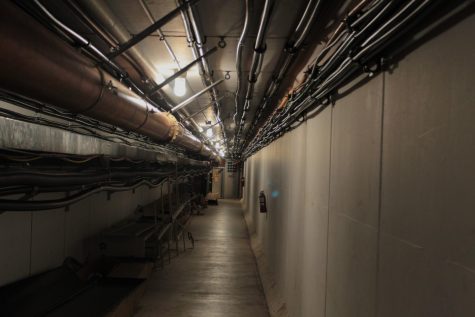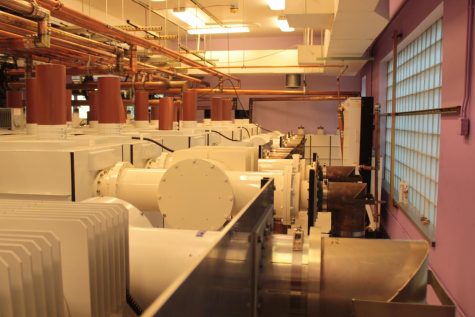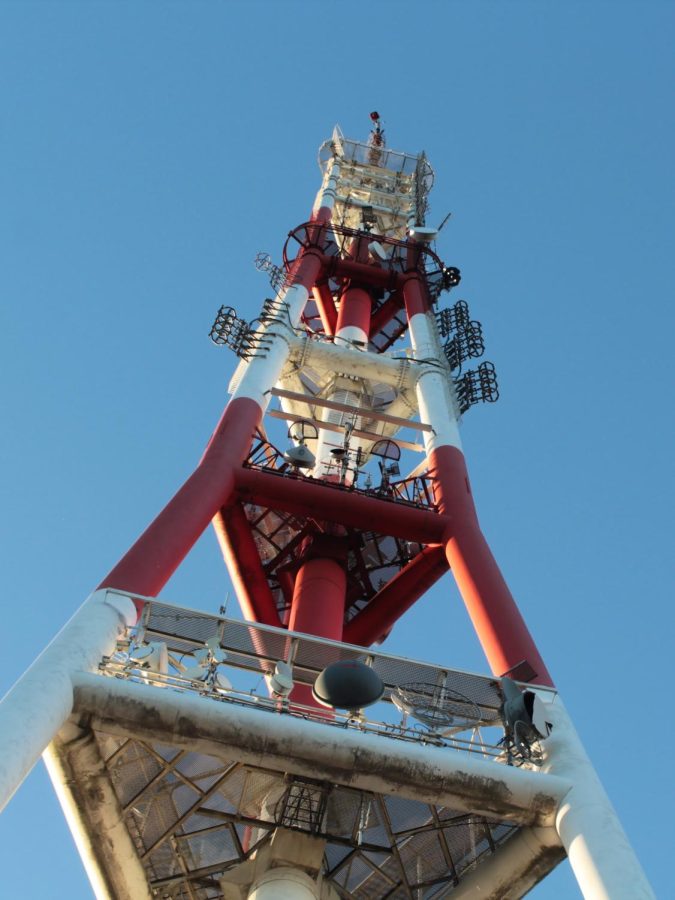History of Stonehenge Tower
September 25, 2022
For decades, the red and white Stonehenge Tower has stood tall above Southwest Portland. The tower blinks unfailingly through the night like a beacon, standing guard over the forests and the streets. It is a structure that much of Portland takes for granted, overshadowed by the skyscrapers that stand below it.
But Stonehenge Tower is an integral part of Portland’s radio networks. Ten Portland radio stations broadcast from this transmitter at the end of a sleepy street in Healy Heights.
One of the men behind this remarkable structure is Gray Haertig. Haertig was the project engineer and owner’s representative for Stonehenge Tower. Fittingly, Haertig now lives in a home at the base of the tower that he created, where he can gaze up at the red glowing light atop the 625 foot behemoth.
Ackerley Broadcasting, the company that owned one of the tower’s original stations, KGON, funded and built the tower. The project cost 7 million dollars, and Haertig was a project engineer for its construction, which broke ground in June 1990. Previously, a 300 foot tall tower had stood on the Stonehenge Tower site, with antennas much closer to the ground than the current tower.
 This led to issues in the surrounding neighborhood. That previous tower resulted in rampant interference with electronic devices, and even household appliances
This led to issues in the surrounding neighborhood. That previous tower resulted in rampant interference with electronic devices, and even household appliances
“Some people would hear the AM radio station on their stoves,” said Haertig.
Additionally, when sampling sites to determine thresholds for radio wave-caused radiation, the Environmental Protection Agency found radio fields in the street near the old tower that are ten times the current general public standard. Homeowners were promised a solution to both the radiation concerns and the interference issues, and this helped Ackerley sell the project.
In order to prove that their claim actually came true, the broadcasters hired a consultant to measure the fields before and after Stonehenge Tower. At the time, Haertig was working for KBOO, one of Portland’s independent radio stations, and since they could not contribute to this effort financially, they instead sent Haertig to assist the consultant.
“I got to work with the premier expert in this field,” said Haertig, “It was a lot of fun.”
Haertig found that the tower would be better off if a center tube was added, and the distance between the legs was increased from 50 to 75 feet. That center tube is where the climbing ladder is located, and it hangs from the top of the tower, as opposed to resting on the ground.
As for the makeup of the rest of the tower, the legs are composed of concrete fused with steel sleeves. The concrete used for Stonehenge Tower is the strongest ever poured in the state of Oregon, at 19,600 PSI, and producing it was an undertaking in itself.
 When it was being poured, it was almost unrecognizable because of its sheer strength. “The concrete is very strange,” said Haertig. “Most concrete has a whole lot more water in it than is optimal. So the object was to make it handleable while reducing the water content.”
When it was being poured, it was almost unrecognizable because of its sheer strength. “The concrete is very strange,” said Haertig. “Most concrete has a whole lot more water in it than is optimal. So the object was to make it handleable while reducing the water content.”
The company that supplied the concrete, Lone Star Cement, had to shut down all other production to focus on the concrete for Stonehenge Tower. Up to the 300 foot level of the tower, 75-foot tall sections of steel were lifted into place using cranes, pumped full of concrete, and welded together. Beyond that, sections were bolted together.
Maintenance on the tower is performed by experienced technicians, who access parts of the tower by climbing the ladder in the center tube. In the tower’s history, only one person has died, this was due to being improperly roped in while performing maintenance.
The actual broadcasting takes place from the transmission building across the parking lot, where each station has their own suite where their transmission equipment is located. Inside this building is a complex array of tables, knobs, sliders, and computers. Each station has a large combiner; after the coax passes through all of them, it heads underground to go up the tower, where antennas broadcast to all of Portland.
This beautifully complex piece of infrastructure is a reflection of all that work that has been put into Stonehenge Tower, and the people whose passion it is to design, construct, and operate radio towers. The towers and the people go unnoticed, but every hour of every day, Stonehenge Tower is watching over Southwest Portland like an old friend.


